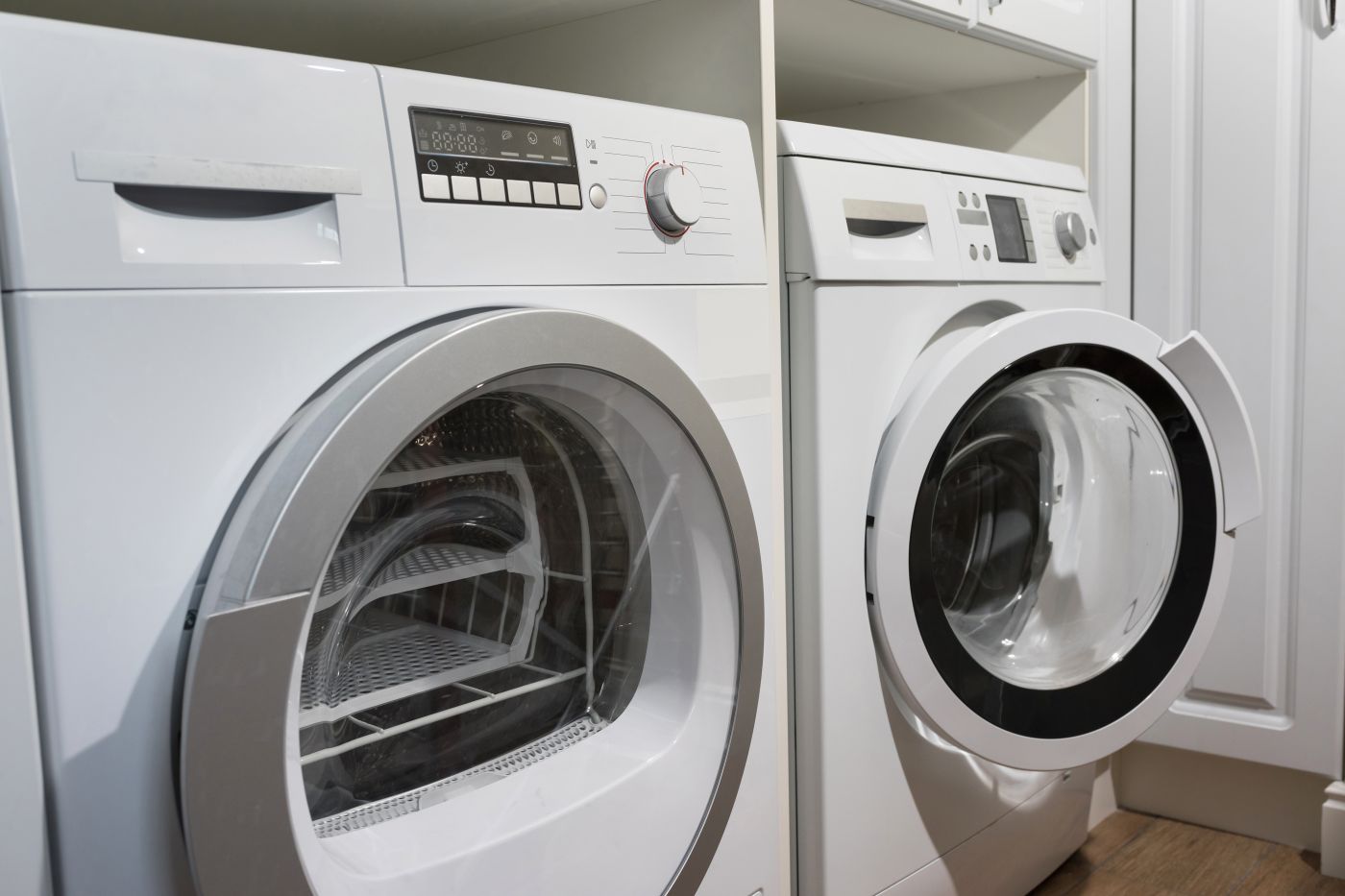Having a clothes dryer at home is undoubtedly convenient but with electricity prices rising around the country it pays to know how much your dryer is costing you to run and whether or not you could be saving with a different type of dryer. In this guide, Canstar Blue discusses the difference between heat pump and condenser dryers, how they work, which performs best and which is cheapest to run.
Condenser dryer vs heat pump dryer: How do they work?
A heat pump dryer operates in a similar way to a reverse-cycle air conditioner. It has a closed-loop heat exchange system that uses hot air to absorb moisture from your clothes. According to the experts at appliance brand Beko, the hot air is passed through an evaporator that extracts the moisture and sends it to a storage tank or a drainage hose. The remaining dry air is then reheated and used to continue drying your clothes. Heat pump dryers use lower temperatures than condenser dryers (typically running at a maximum temperature of about 50 degrees celsius compared to 70-75 degrees celsius for a condenser dryer).
On the other hand, condenser dryers use hot air to dry your clothes and then send that hot air to a condenser chamber where it is condensed into water and expelled through a drainage hose or stored in a container that needs to be emptied manually. Because condenser dryers operate at a high temperature, they need to be kept in a well-ventilated area that allows the hot air to escape.
Heat pump vs condenser dryer: Which performs best?
Because condenser dryers operate at a higher temperature, they will usually dry a load of clothes faster than a heat pump dryer. Condenser dryers are heavy-duty performers that come with a large wet-weight capacity, typically ranging from 6 kilograms to 10kg, so they can be a good option for families who have a lot of washing to get through each week. However, condenser dryers are more expensive to run, compared to heat pump dryers, and are less energy efficient (you can read more about this below).
Heat pump dryers are gentler on your clothes as they operate on a low and slow method: low temperatures over a longer run time. So although it takes longer to get the job done, there is less risk of shrinking or damage to your clothes during the cycle.
Read More: How much electricity does a clothes dryer use?
Heat pump vs condenser dryer: Which is more energy efficient?
The efficiency of your clothes dryer comes down to its energy rating. The easiest way to check the energy efficiency of your dryer is to look at how many stars it has on its energy rating label. The more stars, the higher the energy efficiency and the higher the savings on your electricity bill.
Generally speaking though, a heat pump dryer is more energy efficient and uses about half the amount of energy per load compared to a condenser dryer.
Heat pump dryer vs condenser dryer: Which is cheaper to run?
Dryers can be expensive to run but you can reduce your costs depending on which type of dryer you purchase.
Condenser dryers are more expensive to run per load compared to heat pump dryers. The average energy consumption rate on a condenser dryer is 173kW per load, which costs you about $1.09 per load. If you were to use your condenser dryer for one load per week it would cost you about $57 per year.
On the other hand, a heat pump dryer uses about 87kW per load. This equates to about $0.54 per load. If you were to use your heat pump dryer for one load per week, it would cost you about $28 per year.
Heat pump vs condenser dryer: Which has more features?
Heat pump and condenser dryers offer similar features. Both are well-regarded for their smart drying and durable designs. Most heat pump and condenser dryer models on the market today will typically come with auto-sensing technology, which automatically prevents over-drying and saves on energy. Both types of dryer use multiple drying settings to cater to different fabrics, such as silk, cotton and synthetics. Other features include:
- Drum size: this will impact the functionality and efficiency of your dryer, so choose a large enough capacity to accommodate your household’s needs.
- Reverse tumbling: rotates the drum both ways and pauses in between to keep your laundry separated as well as drying fabrics evenly.
- Dampener system: reduces noise operating levels.
- Fast-drying: speeds up the drying process without putting strain on your clothes.
Looking for more guides on clothes dryers?
- Different types of clothes dryers explained
- A guide to vented clothes dryers
- Condenser dryers buying guide
Heat pump vs condenser dryer: Which is best?
If your clothes drying priorities are fast action and large capacity to get as much drying done as possible with each load, then a condenser dryer may be the best option. But if reducing energy usage and saving on your electricity is more important than upfront cost, then a heat pump dryer could be the ideal choice. When shopping for a new dryer, consider the additional features, functions, design and cycles of each model, plus the energy efficiency rating.
Image credits: Shablovskyistock/Shutterstock.com





Share this article